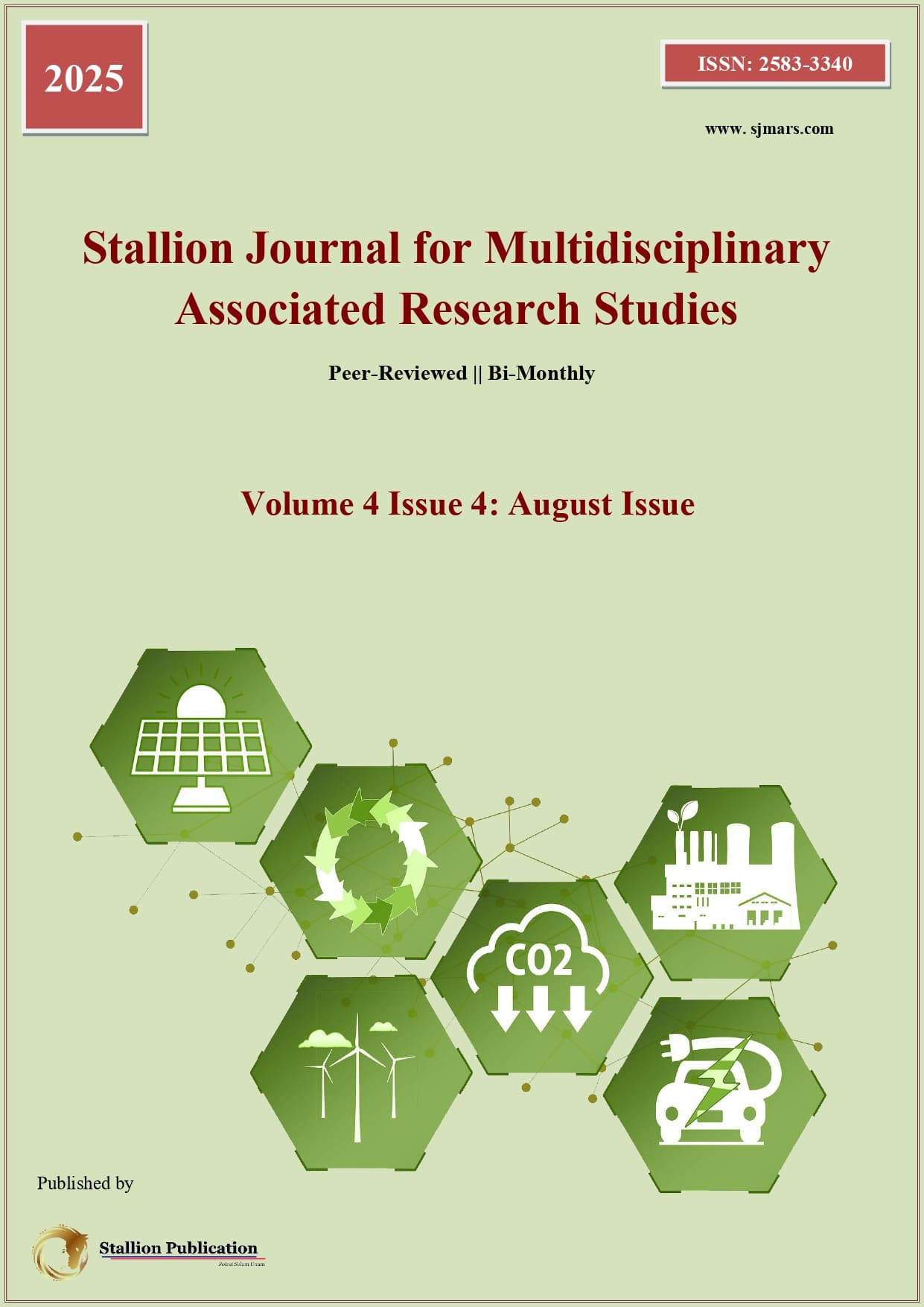Antibacterial Activity of Aqueous and Alcohol Extracts, of Selected Medicinal Plants and Vitamin Profiling Identification by HPLC
DOI:
https://doi.org/10.55544/sjmars.4.4.8Keywords:
Antibacterial activity, Sesamum indicum, plant extracts, Pimpinella anisum, oil extracts, water , fat-soluble vitaminsAbstract
Background: Urinary tract infections (UTIs) represent a significant global health concern, often complicated by the increasing resistance of uropathogens to conventional antibiotics.
Objective: This study investigates the antibacterial efficacy and vitamin content of different extracts of Sesamum indicum (sesame) and Pimpinella anisum (anise) against common UTI-causing bacteria, including Escherichia coli, Klebsiella pneumoniae, Staphylococcus aureus, and Acinetobacter baumannii.
Material and Methods: Plant seeds (P. anisum L. and S. indicum L.) were sourced locally, cleaned, ground, and used for aqueous, and alcoholic using standard maceration, distillation, and concentration methods. Bacterial isolates from UTI patients were identified and tested for antibiotic sensitivity. Antibacterial activity was assessed via agar well diffusion, and vitamin content in extracts was analyzed by HPLC.
Results: Indicated that alcoholic extracts, particularly from P. anisum, exhibited the highest antibacterial activity, with inhibition zones reaching up to 19.20 ± 1.095 mm against E. coli. K. pneumoniae was the most susceptible pathogen, while A. baumannii showed the greatest resistance. High-Performance Liquid Chromatography (HPLC) analysis revealed that both plants contained essential water-soluble (vitamins B1, B2, and C) and fat-soluble (vitamins A, D3, E, and K) vitamins. P. anisum demonstrated a higher total concentration of both vitamin groups compared to S. indicum.
Conclusion: These findings support the potential of S. indicum and P. anisum as natural sources of bioactive compounds with antibacterial properties and nutritional value, suggesting their use as complementary therapies in the management of UTIs.
References
[1] Raju, C.B. and S.C. Tiwari, 2004.Urinary tract 14 infection-A suitable approach. Lecture notes. Acad. Clin. Med., 2(4): 331-334.
[2] Schaeffer, A.J.; N. Rajan; Q. Cao; B.E. Anderson; D.L. Pruden; J. Sensibar, and J.L. Duncan. 2001. Host pathogenesis in urinary tract infection. Int. J. Antimicrob. Agents, 17: 245-251.
[3] Kapil A. 2005. The challenge of antibiotic resistance: need to contemplate. Indian J Med Res.,121(2):83-91.
[4] Lewis, K. and F.M. Ausubel. 2006. Prospects for plant derived antibacterials. Nat Biotechnol., 24(12):1504-7.
[5] Ravi, K.U. 2011. Plant natural products: Their pharmaceutical potential against disease and drug-resistant microbial pathogens. Journal of Pharmacy Research, 4(4):1179-1185.
[6] Sheela, k.; G. N. Kamal; D. Vijayalakshmi; M. Y. Geela, and B. P. Foopa. 2004. Proximate analysis of underutilized green leafy vegetables in southern Kamataka. Journal of Human Ecology, 15(3): 227-229.
[7] Abhishekar, R. A.; B. Nagalakshmi; O. Sai Koushik; B.Vijaya Kumar, and P. Sai Anvith. 2015. The Comprehensive Review on Fat Soluble Vitamins Panchumarthy Ravisankar. IOSR Journal of Pharmacy, 5(11):12-28.
[8] Abou-Gharbia, H. A.; A. A. Y. Shehata, and F. Shahidi. 2000. “Effect of processing on oxidative stability and lipid classes of sesame oil,” Food Research International, vol. 33, no. 5, pp. 331–340.
[9] Elleuch, M.; S. Besbes; O. Roiseux; C. Blecker, and H. Attia. 2007. “Quality characteristics of sesame seeds and by-products,” Food Chemistry, 103(2):641–650.
[10] Srisayam, M.; N. Weerapreeyakul; S. Barusrux, and K. Kanokmedhakul. 2014. Antioxidant, antimelanogenic, and skinprotective effect of sesamol. Journal of Cosmetic Science, 65(2): 69–79.
[11] Furumoto, T. and K. Nishimoto. 2016. Identification of a characteristic antioxidant, anthrasesamone F, in black sesame seeds and its accumulation at different seed developmental stages. Bioscience, Biotechnology and Biochemistry, 80(2):350–355.
[12] Xu, P.; F. Cai; X. Liu, and L. Guo. 2015. Sesamin inhibits lipopolysaccharide-induced proliferation and invasion through the p38-MAPK and NF-
Downloads
Published
How to Cite
Issue
Section
License
Copyright (c) 2025 Stallion Journal for Multidisciplinary Associated Research Studies

This work is licensed under a Creative Commons Attribution-NonCommercial-NoDerivatives 4.0 International License.






